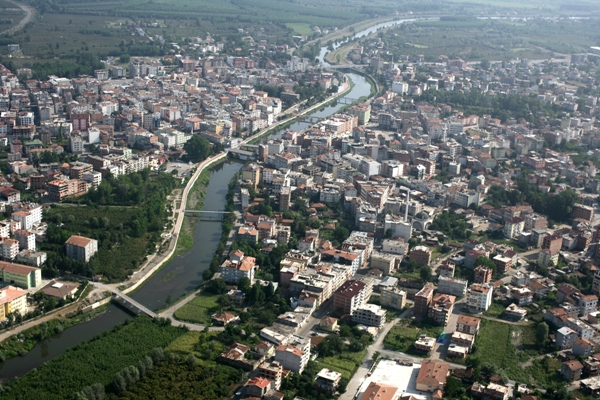
TERME
History of Terme goes back to 1000 B.C. Old historians even claimed that legendary female warriors of Amazons lived on the banks of the river Terme Çayı 1200 B.C.. The name Terme is said to be called after Thermedon (today’s Terme Çayı) where Amazons founded the city called Themiskyra. It is believed that the oldest inhabitants of the district are Kaskas. Kaskas are an aggressive community of nomads living on the Black Sea coast. When Hittites spread to Samsun Kaskas were passed under the rule of Hittites Terme was under the rule of Hittites, Phrygians, Meds, Persians and Roman until the 11th Century when Turks started to dominate Anatolia.
Terme entered into domination of Eastern Roman (Byzantine) in 395. At the time of Alaeddin Keykubat I (1219 - 1236) the whole Black Sea coast, including Terme entered into domination of Anatolian Seljuks. Turkish principalities started to be established in the territory of the Seljuk Empire which fell apart due to Mongol invasion. In this era Eretna principality was established in the region of Amasya - Samsun - Tokat - Sivas - Kayseri. In 1381 Terme was attached to Kadı Burhanettin’s territory when he captured Eretna Principality. In the meantime Canik Principality was also established in the area. Yıldırım Beyazıt included all principalities in Amasya and Black Sea into Ottoman territory in 1389. Terme was governed by Canik until the Republic. Terme was bombed by the Russians in September 1916 during the World War I. The Russian and Armenian gangs wanted to ravage it during the war of independence.
Terme is district of Samsun established in the Central Black Sea region in an area 3-5 km from the sea. It is 58 km from Samsun. It is surrounded by Black Sea in the North, Ünye and İkizce in the East, Akkuş and Salıpazarı in the South and Çarşamba in the West. From the source in Kara Orman, the river Terme flows into Black Sea dividing the district into halves. Connected with each other by natural canals, the lakes Akgöl and Simenit (Simenlik) are located in the area near the sea between the Black Sea and Terme. Lake Simenit was formed as a result of changes in the bed of Terme River. The two lakes are rich in fish because they are flooded by the sea.
The perimeter of the lakes are reedy and marshy. The typical Black Sea climate which is rainy every season prevails in Terme. Winters are mild and summers are cool.
Terme district's population according to the data obtained from Address Based Population Registration System of 2014 is 72,599 in total. The distribution of the population by gender is as follows:
|
TOTAL POPULATION
|
MALE
|
FEMALE
|
|
72.599
|
35.773
|
36.826
|
Terme District’s literacy rate is 97.21% which is above average of Turkey (95.78%). Table of literacy rates is given below.
|
EDUCATION
|
MALE
|
FEMALE
|
TOTAL
|
|
Illiterate
|
349
|
1.526
|
1.875
|
|
Literate
|
32.778
|
32.571
|
65.349
|
|
Unidentified
|
437
|
499
|
936
|
|
TOTAL
|
33.564
|
34.596
|
68.160
|
· prepared taking into account the population over 6 and above.
The majority of the Terme economy is based on agriculture. Famous Terme rice, nuts, corn, soybeans are grown in this fertile plain. Dwarf fruit trees and poplar are also quite common in the district. For example, the second biggest poplar forest is said to be in Terme. Agricultural machinery industry is an emerging industry in the forefront. The machine called hazelnut haymaker which separates hazelnut from husk was first invented and manufactured in Terme. Apart from hazelnut haymaker, many agricultural machines and equipment are manufactured and exported by large scale companies operating in the district.
Fishery and other sea products are also can be mentioned among means of living as Terme is also a coastal town. Economic activities such as livestock husbandry and beekeeping are also important in the district.
The major industrial organisations in Terme are factories processing rice and hazelnut grown in the district. There are 8 hazelnut processing factories and 10 rice mills still in operation within the borders of Terme . Unshelled hazelnuts processed in factories are turned into seeds and exported or placed on the domestic market. Rice plant is processed in the factories the same way and placed on the domestic market for consumption.